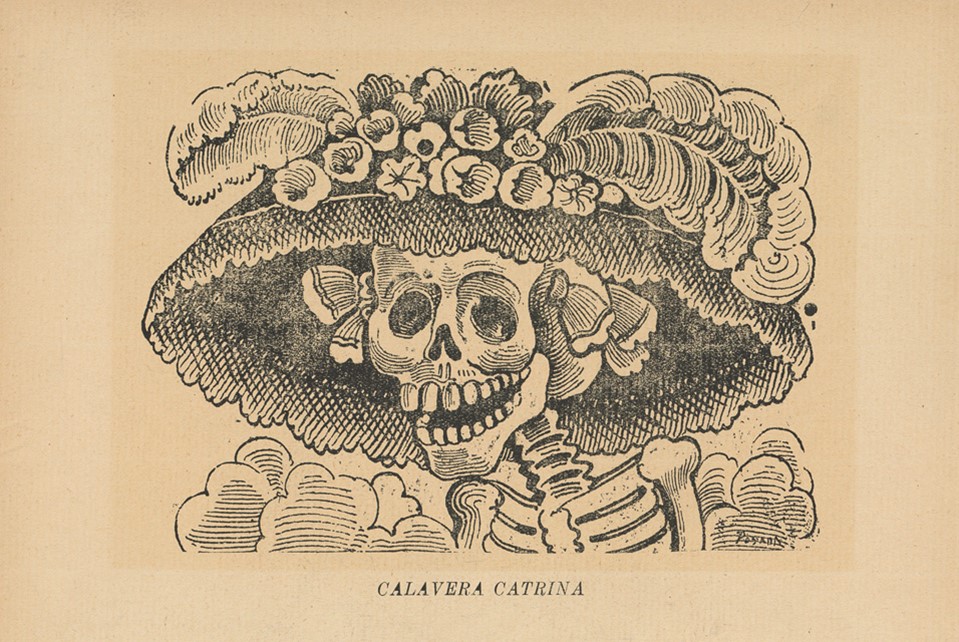
Credit: José Guadalupe Posada, public domain, via Wikimedia Commons
On November 1, across Latin America but especially in Mexico, the cemeteries come alive—with a celebration.
It’s Dia de los Muertos, the Day of the Dead. Legend has it the gates of heaven open for a day to allow the souls of the dead to reunite with loved ones.
It’s considered disrespectful to mourn the dead, so families bring food and drink, clean and decorate gravestones, sing, and dance, fly brightly colored kites, and tell stories about and for the deceased.
Dia de los Muertos is a melding of the Catholic All Saints’ Day brought by the Spanish with the centuries-old tradition of ancestor worship by the native peoples.
Just how many ancestors could we be celebrating? Some enterprising statisticians decided to figure that out.
This took a lot of ciphering and, for different places and eras, assumption—about infant mortality, birthing age of women, size of families, survival rates of disease, the impacts of drought, famine, and war on populations.
In the end, they calculated that 109 billion deceased people have preceded the 8 billion alive today, for a very grand total of 114 billion humans who have occupied Earth.
In 2050, when population is projected to peak around 10 billion, there will be some 110 billion ancestors to worship.
Now that will be a Dia de los Muertos to remember!
Background
Synopsis: Dia de los Muertos is a festive holiday observed each year on November 1 to honor ancestors. It is commemorated in much of Latin America but is most closely associated with Mexico. How many ancestors are there? Demographers calculate that Earth’s human population of around 8 billion people was preceded by about 109 billion now deceased for a total of 117 billion humans ever born. Fourteen times as many people have died as are living today, so there are a lot of ancestors to celebrate!
- Dia de los Muertos, or Day of the Dead, is celebrated on November 1.
- While countries throughout Latin America observe the holiday, it originated in Mexico about 3,000 years ago.
- The holiday combines the indigenous Aztec tradition of honoring the deceased as part of the natural cycle of life with the Catholic All Souls Day brought from Europe by Spanish conquistadors.
- According to tradition, the gates of heaven open at midnight on Halloween night so that the spirits of the deceased can rejoin their families for some fun.
- Indigenous tradition holds that mourning the dead is disrespectful, so this joyous celebration includes food and drink, revelry, and activities the dead enjoyed during life.
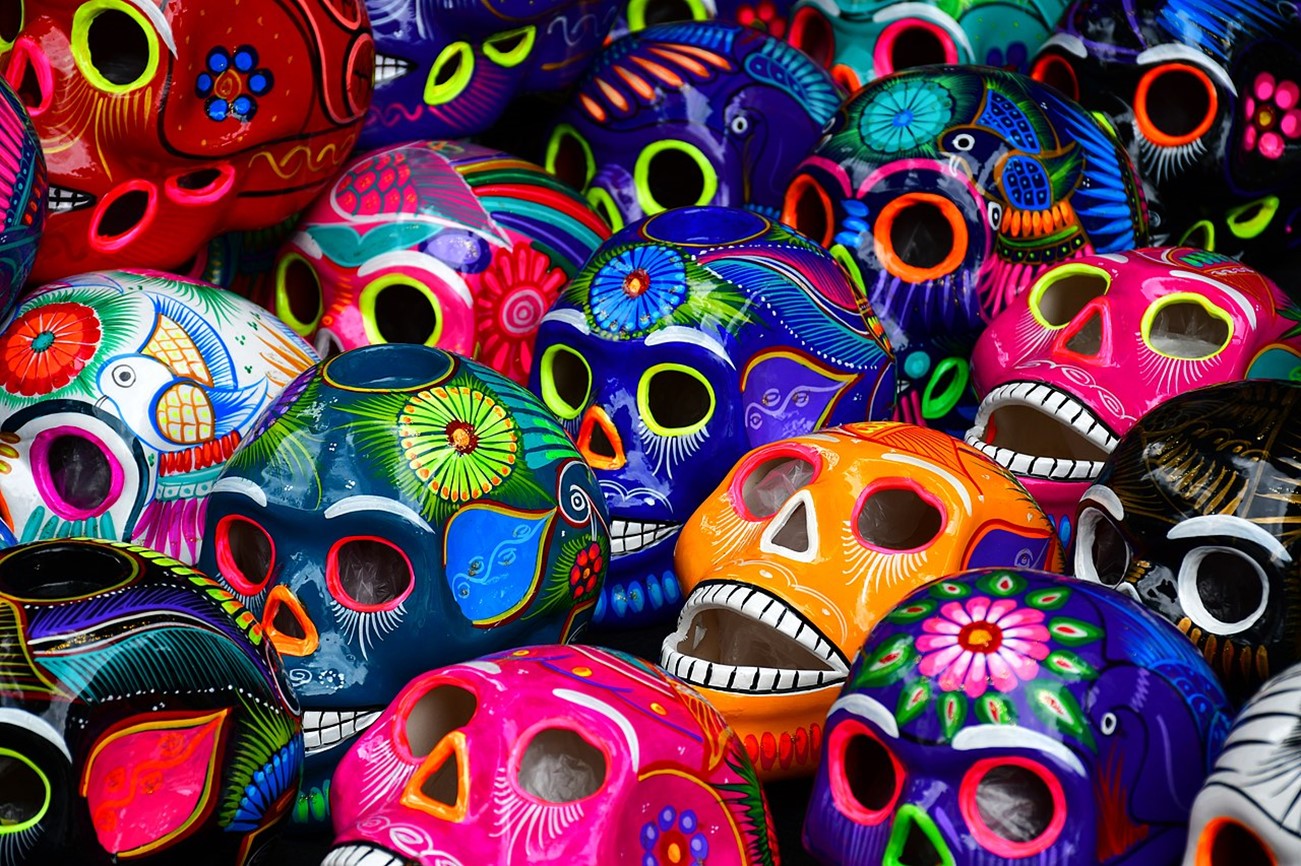
Ceramic calaveras at Tianguis Tonalá (a famous market) in Jalisco, Mexico, before the Day of the Dead.
Credit: Gzzz, via Wikimedia Commons - Symbols of the occasion include skeletons (calacas) and skulls (calaveras) in dolls, fancy dress and parade masks, and sugary sweets.
- Gravestones are cleaned and decorated with marigold flowers. Alters known as ofrendas are created, including photographs, candles and food. Funny verses are written, known as calaveras literarias.
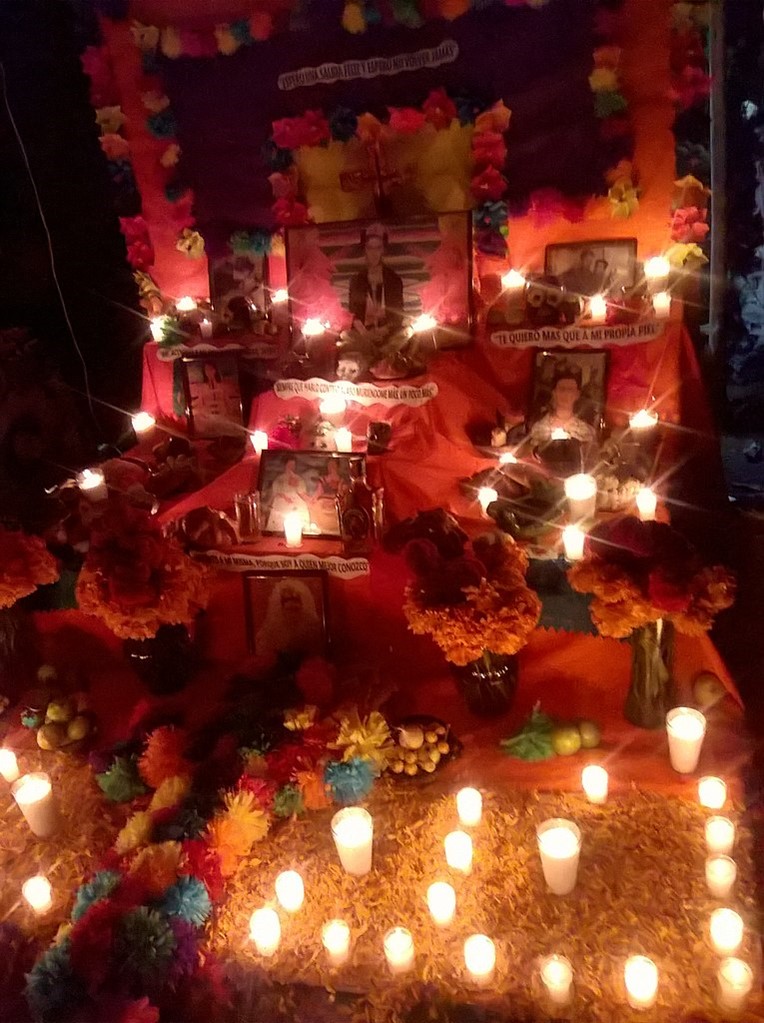
Day of the Dead altar dedicated to painter Frida Kahlo in the municipal cemetery of Orizaba, Mexico.
Credit: Isaacvp, via Wikimedia Commons - In 2008, UNESCO added the holiday to its list of Intangible Cultural Heritage of Humanity events.
- Honoring ancestors raises the question: how many earthly ancestors are there?
- Earth’s population is about 8 billion now, but how many individuals have ever lived on Earth? How many people have been born?
- Demographers study the changing structure of human populations through time based on statistics such as births, deaths, catastrophic events and beneficial developments.
- To watch Earth’s living human population change in real time, try out Worldometers Current World Population page. The total is around 8 billion today.
- Births happen more frequently than deaths, so the planet’s population is continually increasing.
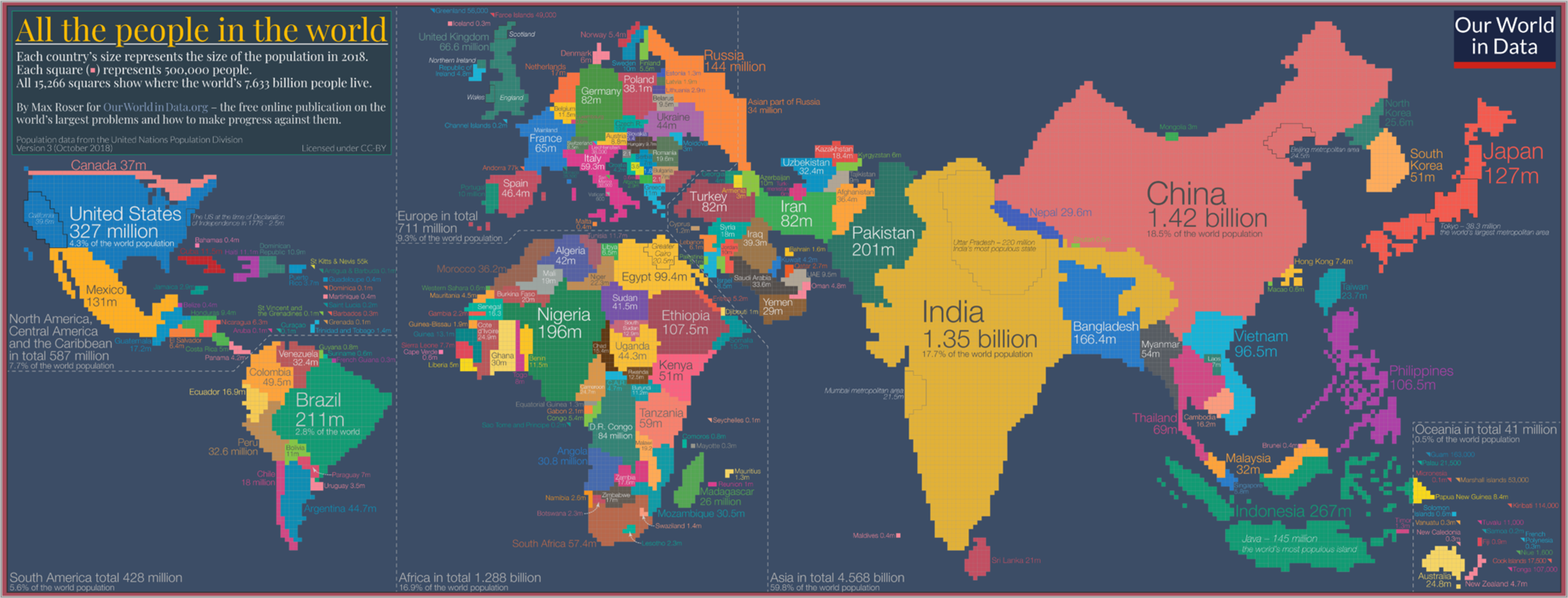
Where does Earth’s current (living) population reside? This is a population cartogram, a geographical presentation of the world where the sizes of countries are not drawn according to the distribution of land but according to the distribution of people. The cartogram shows where in the world the global population was at home in 2018. The cartogram is made up of squares, each of which represents half a million people of a country’s population.
Credit: Our World in Data - Just over 18% of world population lives in China, and just under 18% lives in India. However, India may overtake China in the future.
- Demographers work with historians and archaeologists to assess historical populations through history. Then, they can extend that work to reconstruct an estimate of the total number of beings that ever lived on Earth.
- Many assumptions must be made, including birthrate, child mortality rates and lifespan, which vary through history and may be impacted by wars, pandemics and technological breakthroughs, like science-based medicine and health care.
- As recent as 1800, 46% of babies did not live to see their fifth birthday.
- Resulting estimates are rough, and that is not surprising given that even modern population counts have an uncertainty of 3–5%.
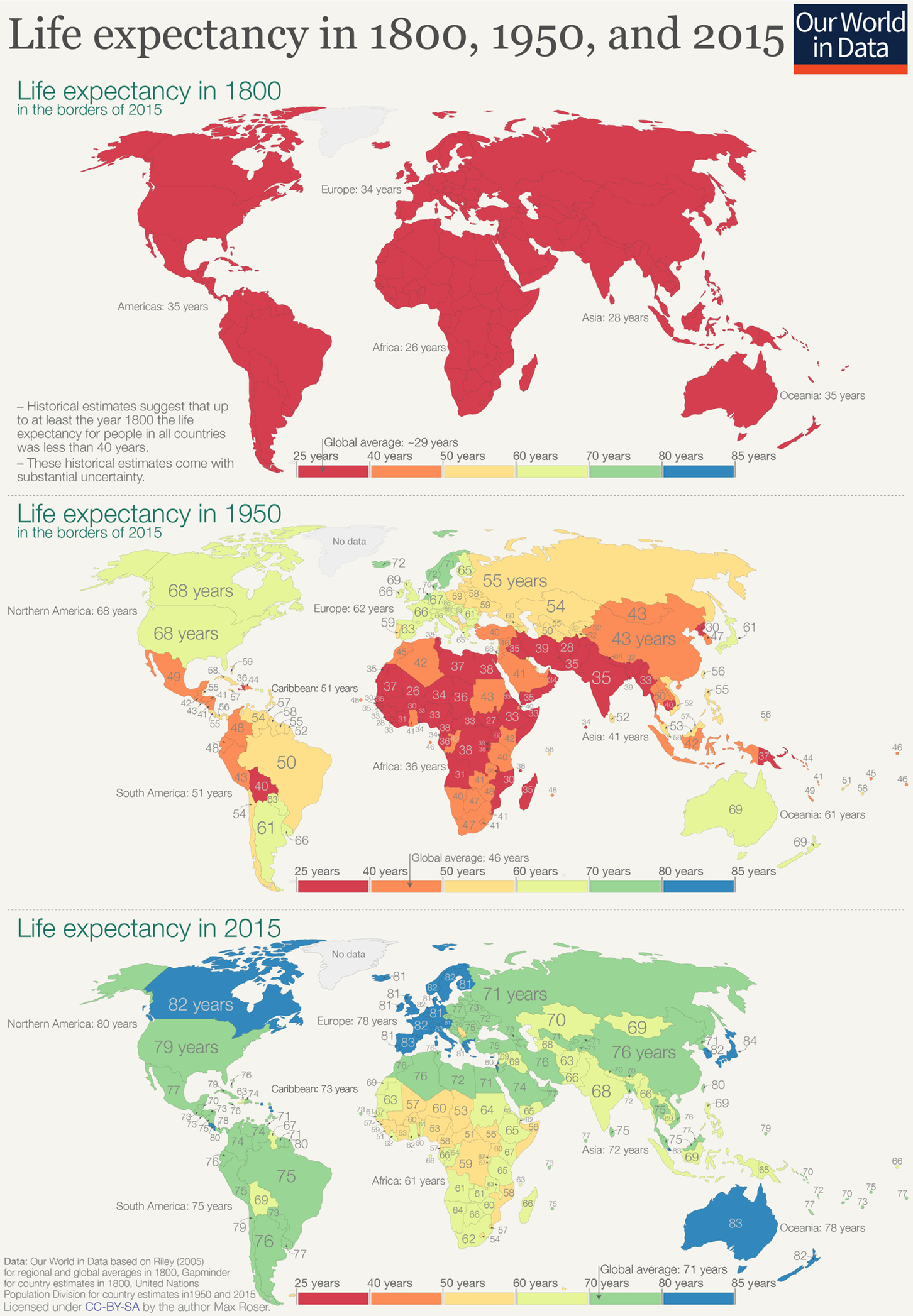
Life expectancy in 1800, 1950 and 2015 illustrates the impact of improved health care.
Credit: Max Roser, via Wikimedia Commons
- The hourglass figure on the following page sums up the most recent findings. The green dots in the hourglass image each represent 10 million living people, while the red dots represent 10 million deceased.
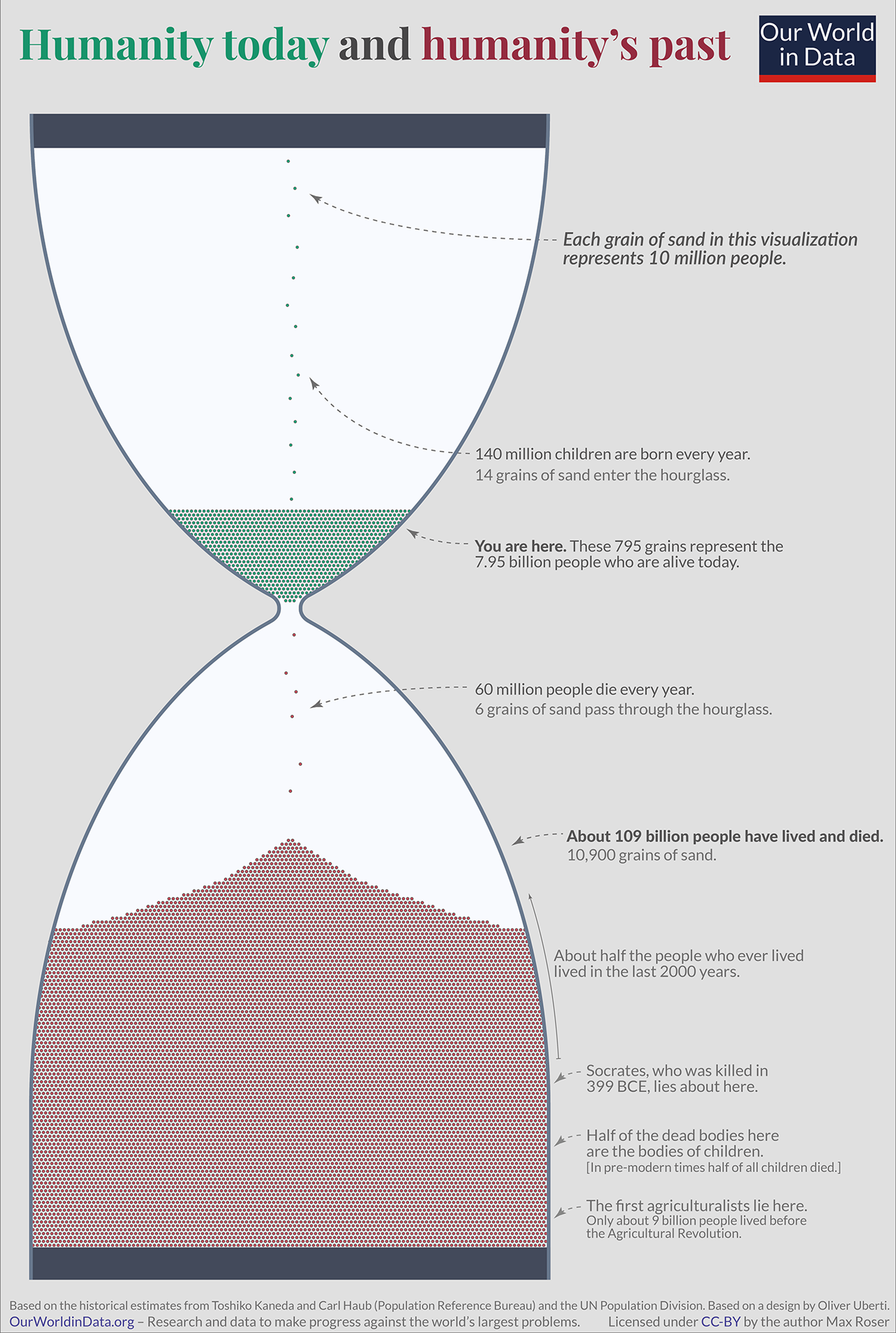
Credit: Max Roser, via Wikimedia Commons - Recent estimates suggest around 109 billion humans have lived and died since humans first walked on Earth (red dots). Adding today’s living population of 8 billion (green dots) results in a total of 117 billion people having been born on Earth.
- Around 140 million people are born each year, while 60 million die each year, trickling through the hourglass.
- For every living person, 14 people have died.
- In 2050, Earth’s living population will be nearly 10 billion, close to what scientists think is the maximum carrying capacity of the planet, truly stressing Earth’s natural resources.
- This will raise the number of earthlings ever born to 120 billion.
- Dia de los Muertos 2050 will feature a lot of ancestors!

